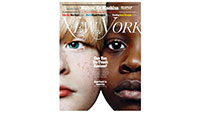 |
1. Lisa Miller’s cover story on Fieldston Lower School in the Bronx, where third- through fifth-graders participate in a controversial program that divides them by race, left commenters sharply divided (“Can Racism Be Stopped in the Third Grade?,” May 18–31). Some felt the “affinity groups” would create dangerous tribalism. “It is hard to say what effect segregating the children for a few sessions will have on them, beyond the obvious one—to make them feel awkward, like there are real ‘lines’ or rigid constraints separating them,” wrote commenter gia1. Others, including some parents of Fieldston students, felt the program was a positive if flawed attempt to look at race relations head-on. Said EverythingIsAwesome, whose child goes to Fieldston: “My family is white. I have been shocked by the reaction of these so-called ‘liberal’ parents to this imperfectly executed but extremely well-intentioned and thought-provoking program. The clear reality is that most of the very privileged white parents at the school don’t give a second’s real thought to how life is for someone outside their racial milieu.” “As a black parent of a child at Ethical”—Fieldston Lower’s sister school—“I support this program,” agreed divakelso. “But I am just as concerned about the reactions of the parents as the children. If you think that talking about race is race baiting or a ‘war on whites’ then that says much more about your thinking, and where you are, than this program. Maybe there should be affinity groups or a similar program for the parents to talk about race next, because we seem to clearly be in dire need.” The “piece perfectly captures moments in which young(ish) progressive educators confront parents who hold old notions of ‘colorblindness,’ ” education journalist Dana Goldstein tweeted. Vox’s Jenée Desmond-Harris wrote a piece titled “Why a New York City School’s Idea to (Temporarily) Separate Kids by Race Is Smart.” “Sure, there are a lot of things that could go wrong with Fieldston’s program,” she wrote. “It might not achieve its goals. It might even make kids more uncomfortable and self-conscious about race than they were before. We have no idea. But what it will almost certainly do is strip kids of some of the naïve beliefs about race that many Americans hold—beliefs that serve to stifle complaints about inequalities and confuse conversations about racial justice by making any mention of race taboo. Some well-intentioned proponents of what they’d call colorblindness believe that it’s divisive—or even racist—to mention the role race plays in American life … This can be frustrating, because even though race is just a social and political construct—something humans created to divide ourselves up that doesn’t have a basis in biology—racism based on this construct is real.”
2. “Why is it such a perennial youthful rite of passage to misunderstand, to underestimate, even to hate Yoko Ono?” asked Lindsay Zoladz (“Yoko Ono Has Arrived,” May 18–31). “What is this strange power she continues to wield?” As if to prove Zoladz’s point, some commenters responded to her story with renewed fury toward Ono. “She was a control freak, a minimal talent (to be generous), self-important, smug, and vindictive,” wrote commenter phil.langley. Several agreed that the origins of Ono hate can be traced to latent sexism. “The world (particularly the internet and its coterie of gossip-hawks and peanut gallerians) vomits its hate on well-known and accomplished women regularly,” wrote commenter Cliffhanger 77. “Consider the ‘most hated woman in Hollywood’ right now: Gwyneth Paltrow … She hasn’t been an evil dictator or suppressor of the masses, a mass murderer or a dog-kicker, to my knowledge … What is it with the public and famous women??” Others were just happy to see Ono getting her due. “I’m saving this article for later,” wrote JREinATL. “So that I can read it at home while I enjoy my favorite cocktail: a single plum, floating in perfume, served in a man’s hat.”
Correction: In “108 Minutes With … Astra Taylor” (May 18–31), it should have been noted that Taylor attended graduate school at the New School, not NYU.